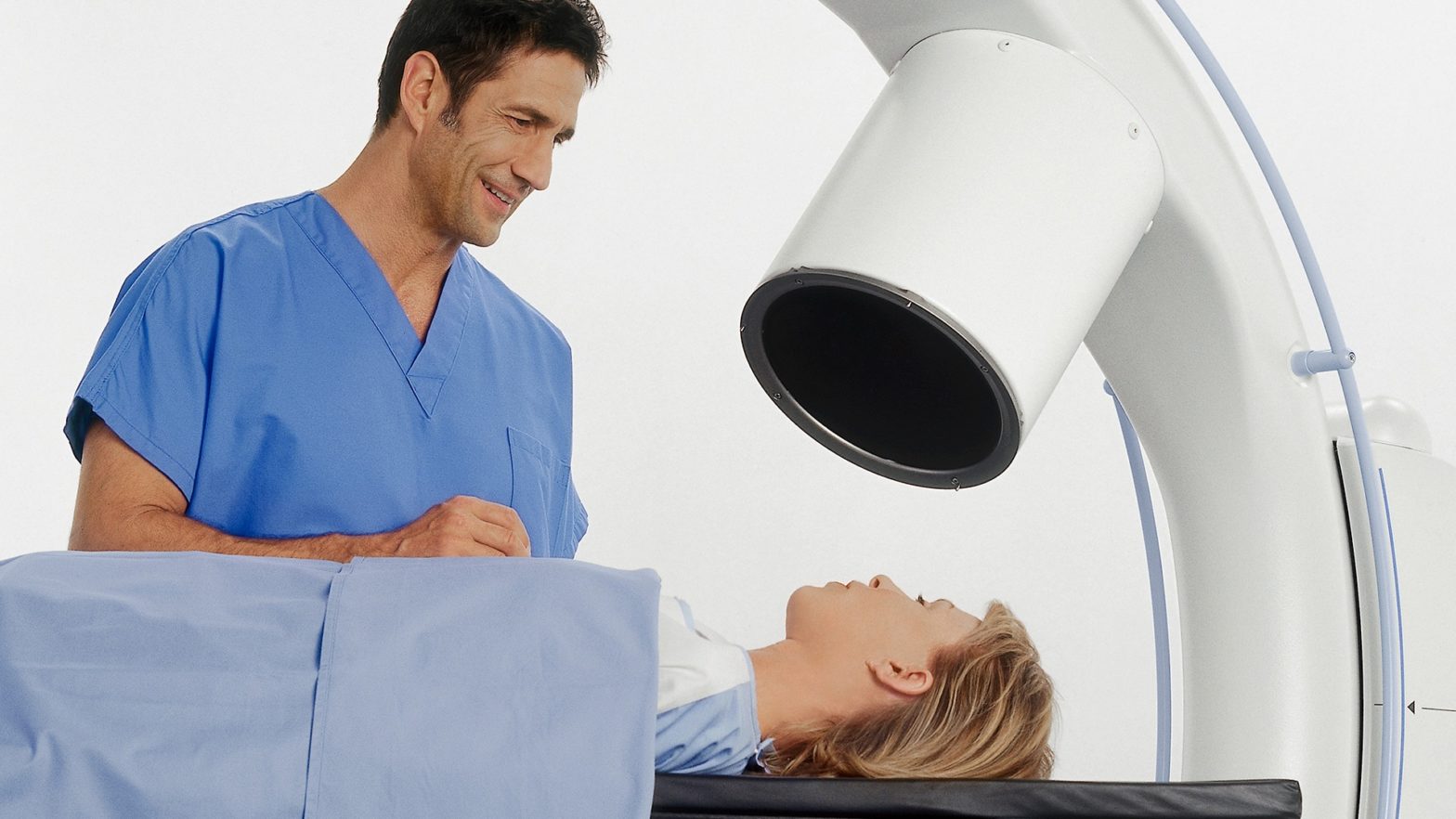The first C-arm device was introduced in the 1950s. It was developed from existing X-ray technologies and has helped push all areas of modern medicine to new heights. The C-arm’s unique design has allowed doctors to monitor medical procedures in real-time and make the necessary corrections required to achieve better results.
At its core, the C-arm is made up two components to produce an image. The X-ray generator and an image intensifier or flat-panel detector. Other components include the moveable C-arm and a workstation used to store and manipulate images.
On one end of the C-arm, the generator produces the X-rays that penetrate the patient’s body. While on the other end, the detector or intensifier absorbs and converts these X-rays into an image that is displayed on the monitor.
While both the image intensifier and the flat-panel detector have the same purpose, which is to provide a viewable image, they work in different ways.
Let’s take a look at the key features of each type:
Image Intensifier
The image intensifier system was developed using analog technology. The image intensifier works by converting X-rays into photons for viewing. To achieve this, X-rays are first converted into light photons as they enter the input phosphor. The photons are then converted to electrons by a photocathode.
These electrons are amplified using focusing electrodes. The outer phosphor converts the amplified electrons back into photons for viewing. Finally, a video camera captures the image to be sent to the monitor display.
Flat Panel Detector
Flat panel detectors use digital technology to produce a clear image. It uses the same technology behind image sensors found in digital cameras. Flat panel detectors are designed to convert X-rays directly into digital data. Eliminating the need for the optical conversion step, flat panel detectors produce images with lesser distortion.
What differences are there between the two?
Image Degradation and Distortion
While image intensifiers can provide high-quality images for several years, image gain and image quality may decrease over time. Furthermore, the convex input phosphor produces peripheral field of view distortion. On the other hand, flat panel detectors show minimal image degradation over a longer period of time compared to image intensifiers. The flat panel design also eliminates geometric distortion.
Sensitivity and Resolution
Flat panel detectors are more sensitive compared to image intensifiers. Thus, the patient receives a lower dose of radiation when taking an image. Flat panel detectors also offer higher and more consistent image quality.
Magnification
Image intensifiers utilize collimation for magnification. As the narrow beam produce a more detailed image, field of vision is reduced with each step. Magnification on a flat panel detector achieves magnification without reducing scale.
Understanding the Cost of Patient Monitors
Although flat panel detectors have several advantages over image intensifiers there are other factors to consider when purchasing a C-arm for your facility and your budget will be the most important one.
Flat panel detectors are generally more expensive compared to their image intensifier counterparts. Being a newer technology, a refurbished flat panel detector system may be hard to come by while refurbished image intensifier C-arms are more common and offer a wider range of price points.
If you have low to moderate patient volume, or if your C-arm needs are limited to general surgery applications, you might find that an image intensifier system will suit you just fine.

